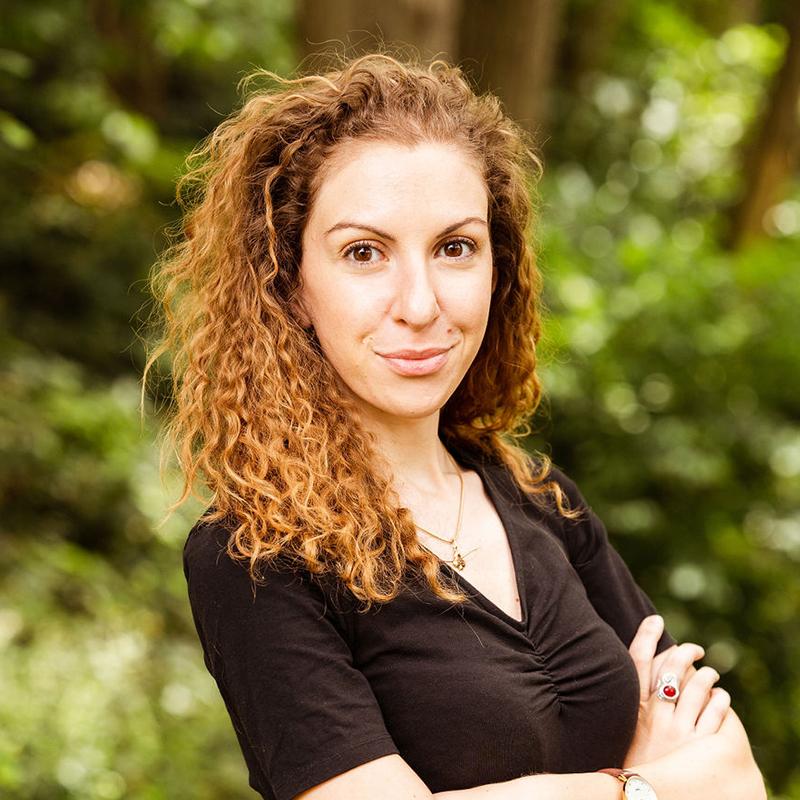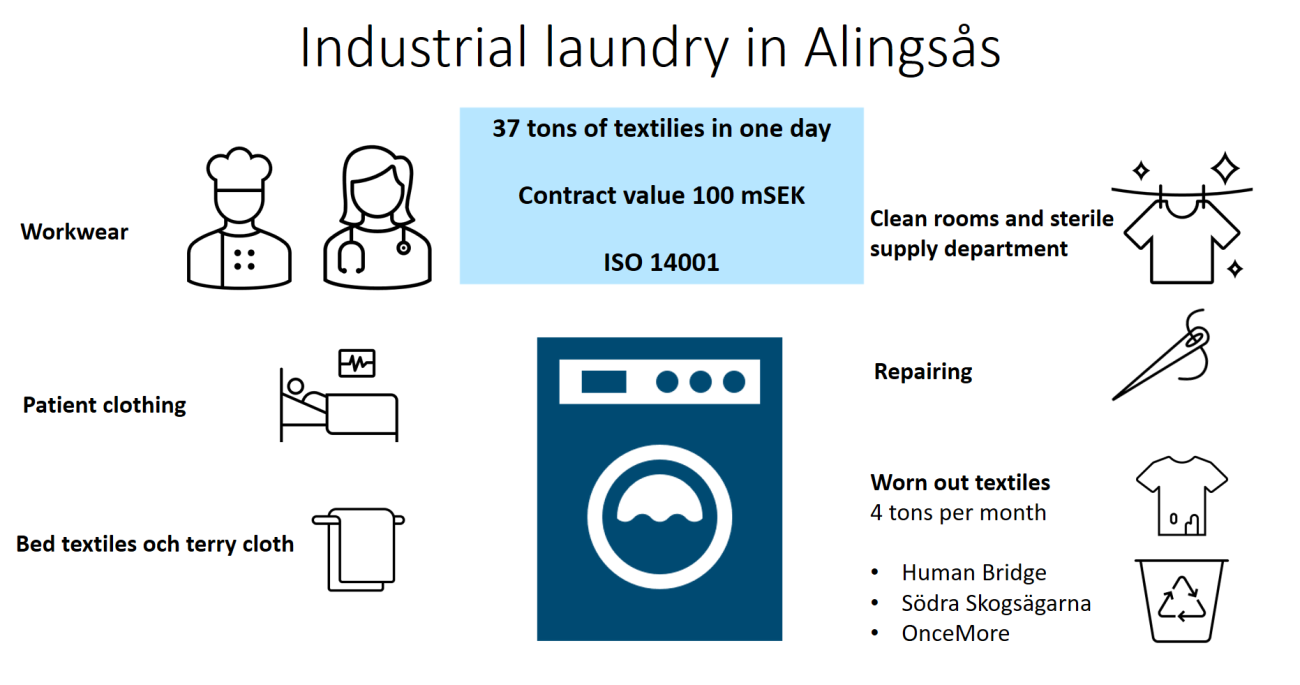
A blog post by Katia Pacella,
Circular Healthcare Project Officer - HCWH Europe
Last October, I had the pleasure of visiting our member - the Västra Götaland Region in Gothenburg, Sweden to learn about their Circular Healthcare goals. I was impressed to see how they use procurement as the primary tool to implement sustainable strategies that support and drive sustainable demands in the region’s 17 local hospitals.
During my stay, I had the opportunity to not only visit the region’s hospitals and observe their sustainability journey first-hand, but I also learnt about the different local services that support the healthcare system such as laundry facilities or the regional procurement centre for assistive technology. This experience helped me build case studies and bring home lessons that can inspire other members of the GGHH community.
Experiences in the Västra Götaland regionCentre for Assistive Technology
During my stay, I visited the Centre for Assistive Technology (ATC) in Molndal, a healthcare supplier that is contracted by the region to provide assistive devices for mobility impairment, cognitive support, and communication.
The centre covers cognitive support, communication, purchasing, warehousing, distribution, service and maintenance of assistive devices, and it also supports prescribers with advice on assistive devices, individual fitting, adaptations, study visits, and training.
The centre can use a variety of maintenance chemicals such as lubricating oils, cleaning agents, or greases, which might contain harmful chemicals, e.g. CMR, EDCs, or PBT. To reduce exposure to hazardous chemicals, the centre adopts the approach of minimising, stock control, and chemical substitution.
To substitute chemicals in procurement, the centre asks the following questions:
- What type of chemical is required and what function does it fulfil?
- How often is this step performed? Once a day/week/month/year?
- Which product is used for this today and how is it used/applied?
- Have you investigated whether it is possible to perform the step differently to reduce the use of chemicals?
Chemical substitution does not mean just replacing a specific class of harmful chemicals, but it may involve substituting chemicals in products, reducing use, or replacing the product – typically after identifying the desired function. Several products have been substituted for better alternatives, but most were actually identified as redundant and they were removed. Either the function was unnecessary, such as acetone as a degreaser (there are less harmful degreasers), or there were several products with the same function that could be removed.
One example is replacing a thread locker - with CMR substances - with a substitute that provides the same function without CMR substances. These harmful substances are included in European healthcare’s phase-out list for chemicals of concern, which itself is based on several lists that recommend substitution, e.g. SIN-list, CMR-list, Reach-list, Candidate-list, list of sensitising/allergenic substances, and MDR regulation.
GGHH Members can learn more about managing maintenance chemicals in our case study on GGHH Connect. Not yet a member of GGHH? Membership is completely free - apply today. GGHH is the largest sustainable healthcare network in the world, focused on the interests and needs of healthcare sustainability practitioners. Our members are using innovation, ingenuity, and investment to transform the health sector and create a healthy future for people and the planet.
This approach to chemicals is part of the centre’s circular supply model, which is also reflected in procurement, transportation, and waste. The centre prioritises user safety, functional requirements, reusability and reconditioning, price, environmental requirements, and product availability in their procurement practices.
Through this model, 60-67% of products procured by the centre are reconditioned. When patients no longer require assistive technology, products are returned to the centre, where they are reconditioned so that they can be prescribed to a new patient. The most significant way to reduce the ecological footprint is to ensure that products are used for as long as they maintain functionality and the benefits of re-use outweigh the cost (economical and environmental).
Read our GGHH case study about the Västra Götaland region’s circular supply model.
Södra Älvsborg hospital
The Västra Götaland region has built a sustainable strategy for textiles covering both use and procurement of textiles in the region. The Alingsås laundry supplies hospitals in the Västra Götaland region, handling 37 tonnes of textiles per day.

Industrial laundry in Alingsås - Västra Götaland region
Aligning with the region’s strategy, the Södra Älvsborg Hospital (SÄS) recently launched a campaign to reduce textile waste and since June 2022, has been working towards sustainable healthcare. In its strategic vision, the hospital connects environmental priorities with social aspects, e.g. public health, human rights, and employment.
I learnt more about the challenges they face and the highest environmental impacts they have assessed, such as staff education, use of plastic materials, pharmaceuticals, chemicals and transportation from ambulance vehicles (ambulance car, assessment car etc.)
Read more about the SÄS hospital’s initiative to reduce textile waste on GGHH Connect.
Angered hospital
During my visit I also met the team at the Angered hospital and learnt about their challenges and goals. The hospital has observed significant volumes of packaging and textile waste (staff clothing). The hospital has adopted new purchasing decisions that promote reduced, single packaging for surgery kits. This change reduced waste, and also saved healthcare staff time during operations. The hospital is also adopting a digital solution that uses chips within staff clothing to track unnecessary waste, which helps reduce waste and additional purchases.
The European phase-out listI met with experts from The Norwegian Hospital Procurement Trust, the National Secretariat Sustainable Public Procurement, and the Swedish Environmental Protection Agency to discuss the development of the European phase-out list. This list is a powerful tool to reduce harmful chemicals in healthcare and align the healthcare system with sustainable demands. We will establish a discussion group to further develop the Norwegian Hospital Procurement Trust’s guidelines on how to use the phase-out list. Learn more in our call for action.
A big thank you to the team at Region Västra Götaland and Chair of the HCWH Europe Board Anders Bolmstedt for this deep dive into the region - I hope this experience can inspire other members and strengthen the network!
All the case studies mentioned are available on GGHH connect. Not yet a member of GGHH? Membership is completely free - apply today to access exclusive resources and events.